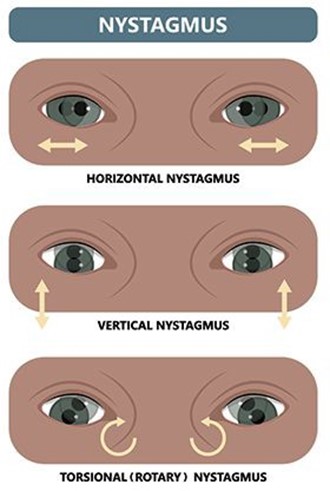You are taking care of a client who suffers from Meniere's disease. On assessment, you note what common symptoms of this disorder? Select all that apply.
Hearing loss.
Nystagmus.
Vertigo.
Tinnitus.
Loss of vision.
Correct Answer : A,C,D
Meniere's disease is a disorder of the inner ear characterized by episodes of vertigo, hearing loss, tinnitus, and a feeling of fullness or pressure in the ear. Nystagmus is not a common symptom of Meniere's disease. Nystagmus is a rhythmic oscillation of the eyes and may be present in other conditions such as vestibular disorders, drug toxicity, or brainstem lesions.
Choice B, nystagmus, is incorrect because although nystagmus can occur in other vestibular disorders, it is not a common symptom of Meniere's disease.
Choice E, loss of vision, is incorrect because Meniere's disease affects the inner ear and does not typically cause vision loss.

Nursing Test Bank
Naxlex Comprehensive Predictor Exams
Related Questions
Correct Answer is A
Explanation
Monitoring the rate of IV infusions. In clients with diabetes insipidus, fluid therapy is essential to restore hydration levels. It is important to monitor the rate of IV infusion to avoid rapid administration of fluids, which can lead to fluid overload and pulmonary edema. Therefore, monitoring the rate of IV infusions is the most important intervention for this client.
Choice B, weighing the client daily, is incorrect because it is not the most important intervention for this client. While daily weighing is important for monitoring fluid balance, monitoring the rate of IV infusion is more critical.
Choice C, measuring the urine output every 30 minutes, is incorrect because although it is important to monitor urine output in clients with diabetes insipidus, it is not the most important intervention. Monitoring the rate of IV infusion is more critical to prevent fluid overload.
Choice D, measuring the fluid intake, is incorrect because although it is important to monitor fluid intake in clients with diabetes insipidus, it is not the most important intervention. Monitoring the rate of IV infusion is more critical to prevent fluid overload.
Correct Answer is B
Explanation
Inspection, followed by Auscultation, Percussion, and Palpation. Inspection assesses for abdominal contour, symmetry, any visible masses, scars or other abnormalities. Auscultation assesses bowel sounds, and Percussion assesses for any areas of tenderness, and to determine the presence of fluid, gas or masses. Palpation assesses for any masses, areas of tenderness, organ size or other abnormalities. This is the order that allows the nurse to assess the abdomen systematically and accurately.
A: Palpation comes last because it can stimulate bowel sounds, which can make the nurse miss some of the sounds while auscultating.
C: Auscultation must be done before percussion and palpation to prevent altering bowel sounds.
D: Percussion comes before palpation to avoid altering the underlying structures of the abdomen.
Whether you are a student looking to ace your exams or a practicing nurse seeking to enhance your expertise , our nursing education contents will empower you with the confidence and competence to make a difference in the lives of patients and become a respected leader in the healthcare field.
Visit Naxlex, invest in your future and unlock endless possibilities with our unparalleled nursing education contents today
Report Wrong Answer on the Current Question
Do you disagree with the answer? If yes, what is your expected answer? Explain.
Kindly be descriptive with the issue you are facing.
